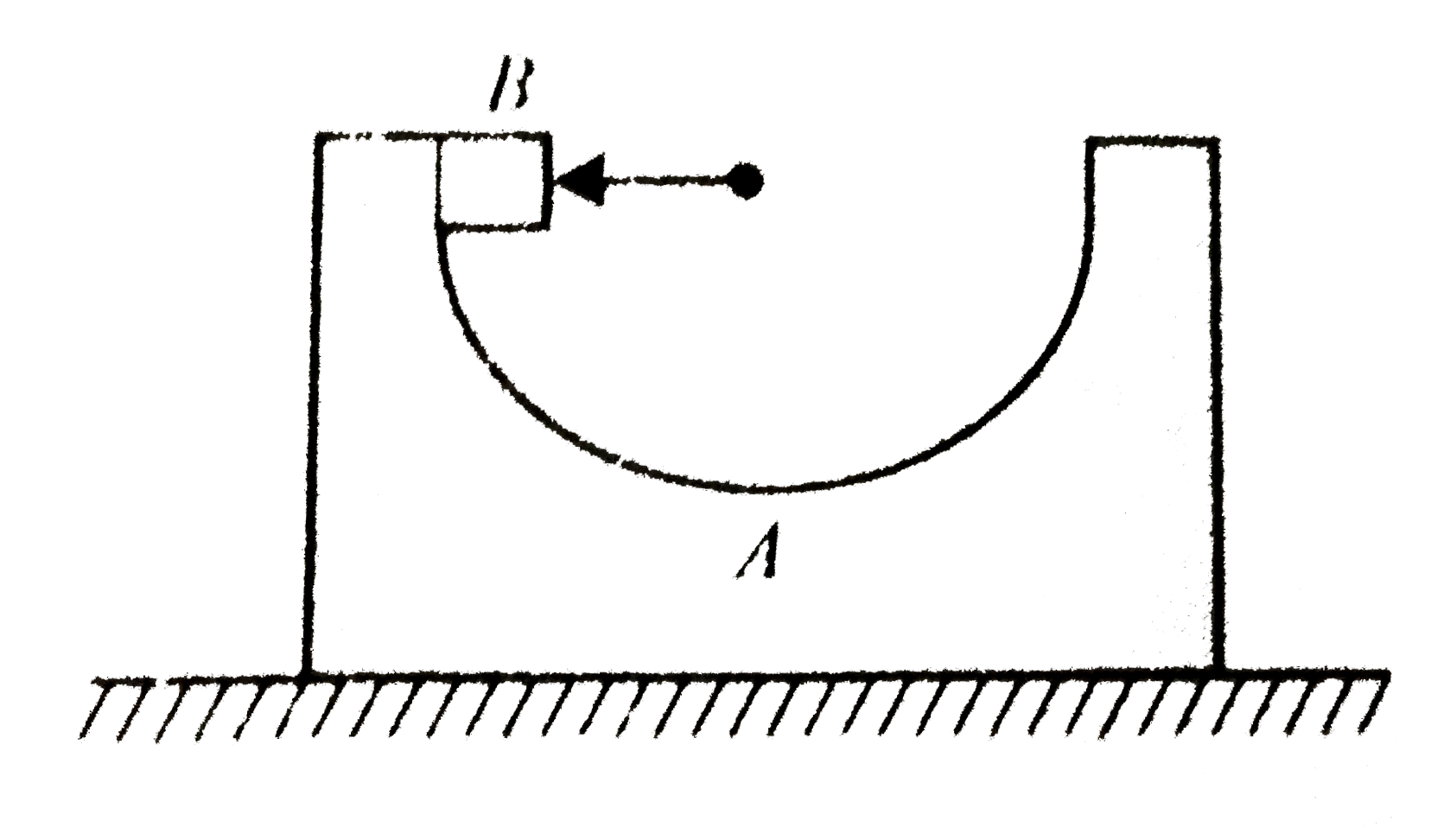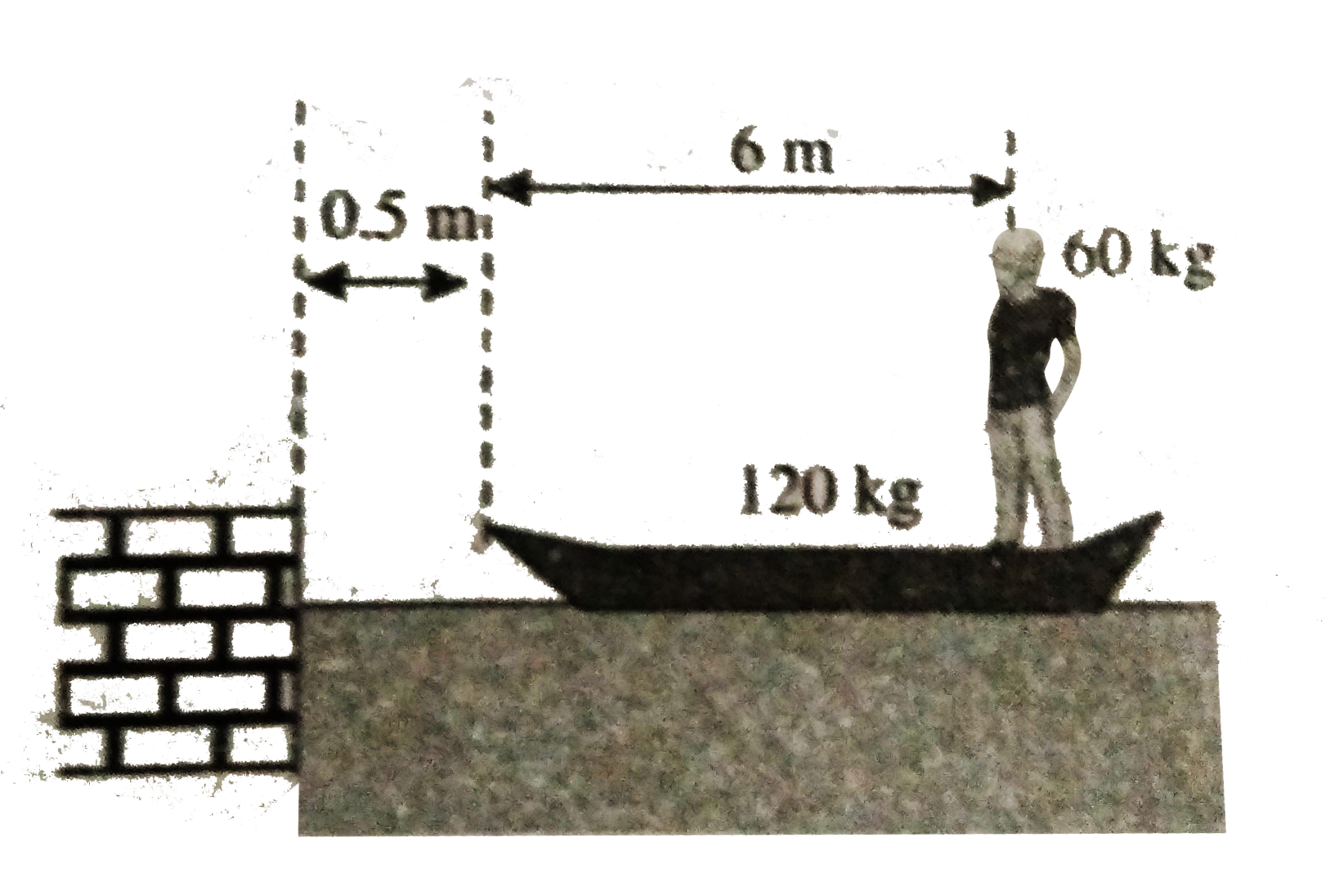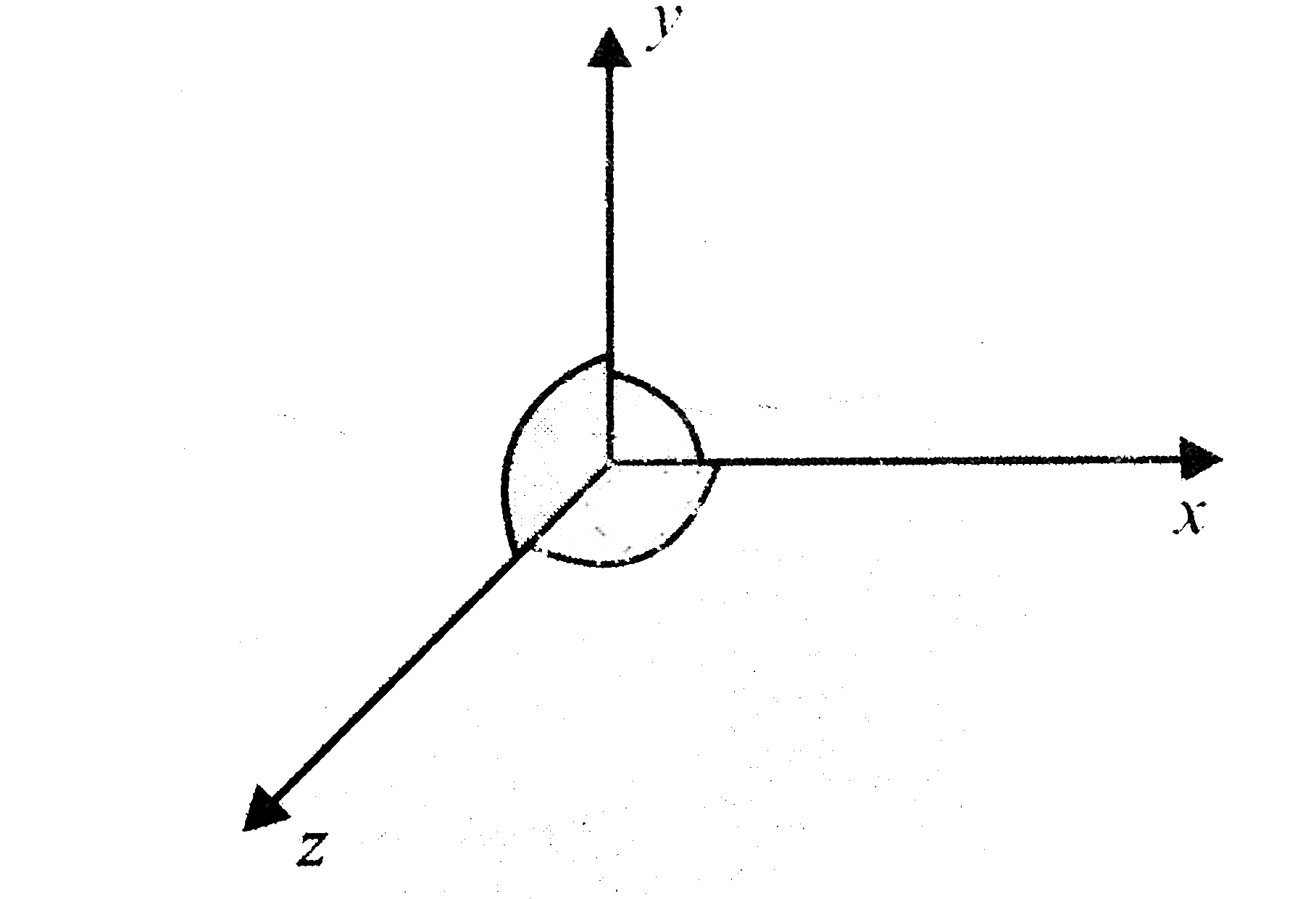Exercise 1.2 from CENGAGE PHYSICS Chapter 5 CENTRE OF MASS for Class 11
| Class 11 | PHYSICS |
| Chapter | CENTRE OF MASS |
| CENGAGE PHYSICS | Exercise 1.2 |
| Medium | English |
| Academic Year | 2023-2024 |
Question 5
A shell is fired from a cannon with a speed of 100m/s at an angle 30∘with the vertical (y-direction). At the highest point of its trajectory, the shell explodes into two fragments of masses in the ratio 1:2. The lighter fragment moves vertically upwards with an initial speed of 200m/s. What is the speed of the heavier fragment at the time of explosion? View SolutionQuestion 6
Figure shows a block A of mass 6m having a smooth semicircular groove of radius a placed on a smooth horizontal surface. A block B of mass m is released from a position in groove where its radius is horizontal. Find the speed of the bigger block when the smaller block reaches its bottom most position.
 View Solution
View SolutionQuestion 7
Two friends A and B (each weighing 40kg) are sitting on a frictionless platform some distance d apart. A rolls a ball of mass 4kg on the platform towards B which B catches. Then B rolls the ball towards A and A catches it. The ball keeps on moving back and forth between A and B. The ball has a fixed speed of 5m/s on the platform.
a. Find the speed of A after he rolls the ball for the first time.
b. Find the speed of A after he catches the ball for the first time.
c. Find the speed of A and B after the ball has made five round trips and is held by A.
d. How many times can A roll the ball?
e. Where is the centre of mass of the system A+B+ ball at. the end of the nth trip? View SolutionQuestion 9
Two identical buggies 1 and 2 with one man in each move along parallel rails. When the buggies are opposite to each other, the men jump in a direction perpendicular to the direction of motion of buggies, so as to exchange their places. As a consequence, buggy 1 stops and buggy 2 keeps moving in the same direction with its final velocity v. Find the initial velocities v1 and v2 of buggies. Mass of each buggy (without man) equals M mass of each man is ignore frictional effects anywhere and the buggies are constrained to move along the rails only.
 View Solution
View SolutionQuestion 10
In Fig. a man stands on a boat floating in still water. The mass of the man and the boat is 60kg and 120kg, respectively.

a. If the man walks to the front of the boat and stops. what is the separation between the boat and the pier now?
b. If the man moves at a constant speed of 3m/s relative to the boat, what is the total kinetic energy of the system (boat + man)? Compare this energy with the kinetic energy of the system if the boat was tied to the pier.View SolutionQuestion 11
Two blocks of masses m1=2kg and m2=5 kg are moving in the same direction along a frictionless surface with speeds 10m/s and 3m/s, respectively, m2 being ahead of m1. An ideal spring with k=1120N/m is attached to the back side of m2. Find the maximum compression of the spring when the blocks collide. What are the final velocities of the blocks when they separate?
 View Solution
View SolutionQuestion 12
An 80kg boy and his 40kg sister, both wearing roller blades, face each other at rest. The girl pushes the boy hard, sending him backward with velocity 3.0m/s towards the west. Ignore friction, (a) Describe the subsequent motion of the girl. (b) How much chemical energy is converted into mechanical energy in the girl's muscles? (c) Is the momentum of the boy-girl system conserved in the pushing apart process? How can it he with no motion beforehand and plenty of motion afterward? View SolutionQuestion 13
Two blocks of masses M and 3M are placed on a horizontal, frictionless surface. A light spring is attached to one of them and the blocks are pushed together with the spring between them. A cord initially holding the blocks together is burned, after that, the block of mass 3M moves to the right with a speed of 2.00m/s. (a) What is the velocity of the block of mass M. (b) Find the system's original elastic potential energy, taking M=0.350kg. (c) Is the original energy in the spring or in the cord? Explain your answer. (d) Is momentum of the system conserved in the bursting apart process? How can it be with large forces acting? How can it be with no motion beforehand and plenty of motion afterward?
 View Solution
View SolutionQuestion 16
A projectile of mass 50kg is shot vertically upwards with an initial velocity of 100m/s. After 5s, it explodes into two fragments, one of which having a mass of 20kg travels vertically up with a velocity of 150m/s:
a. What is the velocity of the other fragment that instant?
b. Calculate the sum of momentum of fragment 3s after the explosion. What would have been the momentum of the projectile at this instant if there had hem explosion? View SolutionQuestion 17
a. A rail road flat car of mass M can roll without friction along a straight horizontal track . Initially, a man of mass m is standing on the car which is moving to the right with speed v0. What is the change in velocity of the car if the man runs to the left so that his speed relative to the car is vrel just before he jumps off at the left end?
b. If there are n men each of mass m on the car, should they all run and jump off together or should they run and jump one by one in order to give a greater velocity to the car?
 View Solution
View SolutionQuestion 18
a. A rail road car of mass M is moving without friction on a straight horizontal track with a velocity ct. A man of mass m lands on it normally from a helicopter. What will be the new velocity of the car? ltbgt b. If now the man begins to run on it with speed um with respect to car in a direction opposite to motion of the car, what will be the new velocity of the car? View SolutionQuestion 19
A shell of mass 2kg moving at a rate of 4m/s suddenly explodes into two equal fragments. The fragments go in directions inclined with the original line of motion with equal velocities, If the explosion imparts 48J of translational kinetic energy to the fragments, find the velocity and direction of each fragment. View SolutionQuestion 21
A hemisphere of radius R and of mass 4m is free to Slide with its base on a smooth horizontal table. A particle mass m is placed on the top of the hemisphere. Find the angular velocity of the particle relative to hemisphere at an angular displacement θ when velocity of hemisphere has become v.
 View Solution
View SolutionQuestion 23
Two trolleys A and B are free to move on a level frictionless track, and are initially stationary. A man on trolley A throws a bag of mass 10kg with a horizontal velocity of 4ms−1 with respect to himself on to trolley B of mass 100kg. The combined mass of trolley A (excluding bag) and the man is 140km. Find the ratio of velocities of trolleys A and B, just after the bag lands on trolley B.View Solution



